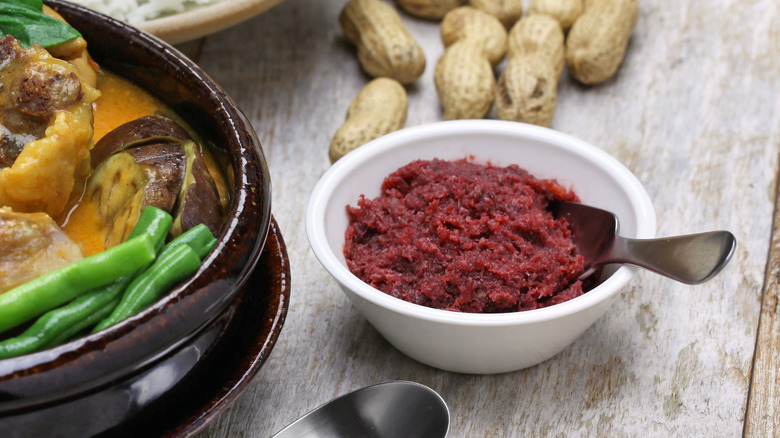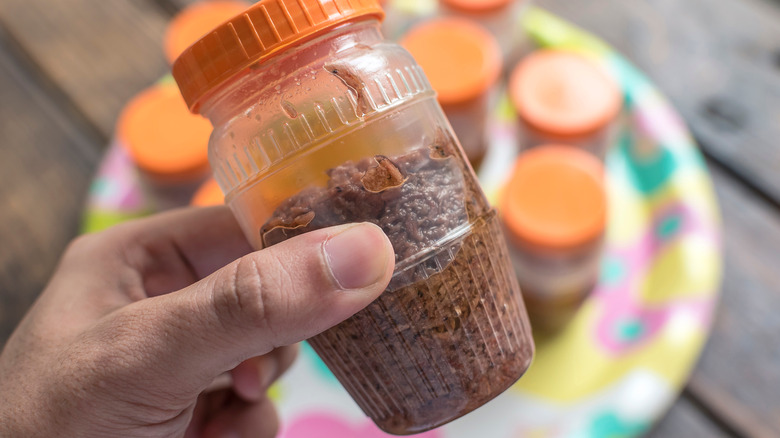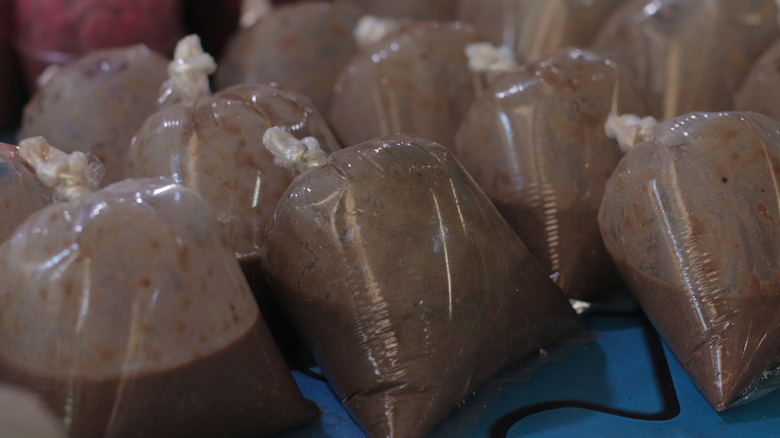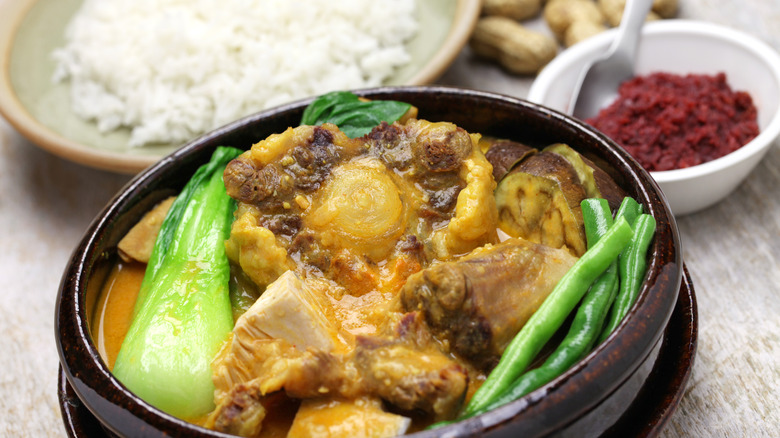The Pungent Filipino Condiment You Should Have In Your Pantry
The smell of this condiment is so pungent that it terrorized passengers on a 19th-century ship, via The New York Times. But — love it or loathe it — bagoong, the Philippine condiment made with fermented seafood paste, per Grocery Filipino, is what many of the country's most beloved dishes are built on. As Filipina chef Yana Gilbuena tells Tatler Asia, "bagoong is so essential because it provides that umami. It's very noticeable. It is the X-factor in our food".
While the love for bagoong across the Philippines is nearly universal, the condiment may mean different things in different parts of country, and those distinctions could come down to how it is made in each region. Grocery Filipino says bagoong isda (or fish bagoong) dominates sections of the northern island of Luzon, as well as the northern half of the Visayas, which sits in central Philippines. In the southern half of the Visayas and on the southern island of Mindanao, fish bagoong made with anchovy is also known as guinamos or ginamos. Then there is bagoong alamang, or bagoong made with krill — a crustacean — and which is also found in Northern Luzon, but can also be found across the country.
History of bagoong
The practice of making and fermenting shrimp paste is said to date back to the 8th century when shrimp was collected, thoroughly mixed with salt, then left in open air to ferment into a paste that could remain shelf-stable for months, per Taste Atlas. The condiment is said to be ideal for the regions that make them, because once bagoong is fermented, it remains edible, no matter how hot or humid it gets.
And while bagoong may be proudly Filipino, it isn't exactly unique to the country, with The Spruce Eats indicating the practice might have even begun in Southern Thailand. That being said, it's no surprise that the fermented seafood paste is found across different parts of Southeast Asia. In Myanmar, it is known as "ngapi" and is also made of shrimp and fish paste, according to My Local Passion. There's also "kapi," which is made exclusively with krill in Thailand, per Bon Appétit; and "terasi" — a dried, fermented shrimp paste in Indonesia, via Delighted Cooking. Then there is "belacan", the shrimp paste synonymous with Malaysian cooking. Other condiments that are similar to bagoong can also be found in Cambodia, Vietnam, as well as in China.
How is bagoong made?
In his quest to describe how bagoong is made, American chef Nate Appleman describes a trip to the central Philippine province of Negros Occidental, where he witnesses fishermen trawling for baby shrimp "the size of long-grain rice" using long nets, laying the same nets out on bamboo tables where fish and shrimp are sorted from random debris, per Food Republic. Once the shrimp have been dried, they are then transferred into a bucket where they are trampled on by a fisherman, as salt is added by a helper. The shrimp are then divided into baggies and left to ferment.
But Kawaling Pinoy suggests there are far less tummy-turning ways to make bagoong, where the krill or fish are cleaned in brine or saltwater, per SBS, then mixed with salt, and left in clay jars for between one to three months to ferment. Food coloring is then added to the mix, to give it the red or pink color Filipinos know it to be.
You can even make bagoong yourself. Panlasang Pinoy recommends acquiring small shrimp, cleaning them thoroughly, then draining them before mixing in about 1 ¼ cups of salt for every 2.2 pounds of krill. Bottle the mixture, seal tightly, and refrigerate for at least three weeks. The site also recommends you mix the bagoong "once in a while" so that the salt remains evenly distributed.
How bagoong is used
Chefs and foodies like blogger Marvin Gapultos swear by bagoong. According to the blogger "bagoong can lend extra complexity to a dish that you can't get from salt, or even from fish sauce," per Food Republic. He adds that "The trick is to not overdo it."
Manila-based chef Mikel Zaguirre tells Tatler Asia that he likes his bagoong "stewed for hours" before he cooks it into fried rice, snacks on unripe green mango with the fermented shrimp on the side, or adds it to the classic Filipino dish kare kare – a stew made with ox tail, pork, goat, or chicken, in a "thick, savory peanut sauce," via Taste Atlas. Chef Aaron Isip prefers his bagoong mixed with vinegar and served as a dipping sauce for grilled pork belly, while Stephan Duhesme says a top-quality bagoong can be enjoyed with rice and eggs.
And while it's endured criticism, bagoong, along with patis (fish sauce), vinegar, kalamansi, and more, are part of what noted Filipino food writer Doreen Fernandez calls "a galaxy of flavor-adjusters," that makes the cuisine of the Philippines so unique.



